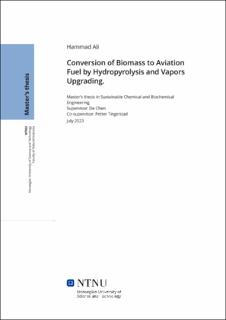| dc.description.abstract | The world is moving towards more sustainable energy generation techniques and renewable energy sources, there has been a dire need for alternatives to come into play now and enormous studies have already been done for biofuels as an alternative. The main reason for this greener change is the alarming environmental crisis and global warming along with depleting resources for fossil fuels and the fast-growing population are all reasons and motivations to find an alternative source of energy to fulfill the needs of usage.
Physical changes were made to the rig arrangement to run experiments. One of the main purposes is to increase the overall mas yield for the pilot plant. Two additional glass condensers were attached after the primary condenser and the solvent bottle having GVL was also attached to capture vapors passing through the condensers and not condensed. Overall mass yield was increased from 65% to 90% and bio-oil yield was also increased from 22% to 34% and stabilized for all experiments performed with additional condensers.
Several catalysts were tested for catalytic upgrading ability, analyzing bio-oil samples for composition and carbon chain lengths. Titanium dioxide was used as catalyst support and ruthenium, platinum, and cobalt were used as active metals for catalysts. Gas analysis showed CO, CO2, CH4, and light hydrocarbons C2- C6 were present with CO and CO2 being the main contributors. Ketonization and aldol condensation reactions took place in the presence of catalysts. (FCC + Co/TiO2 + Pt/TiO2) has shown good ketonization activity following (FCC + Ru/TiO2). Pure titanium dioxide has shown high hydrogenation ability as well. Sand and FCC were used as the fluidizing medium in the pyrolysis reactor.
Elemental analysis to identify carbon, oxygen, and hydrogen present in bio-oil was also done and a comparison was documented with conventional diesel fuel. H/C and O/C ratios were also plotted on van Krevelen's diagram to visualize the conditions and differences of the sample from conventional fuel. HHV was also calculated for bio-oil and compared with diesel fuel, the difference is noted as there is a difference in elemental composition for samples analyzed. | |
